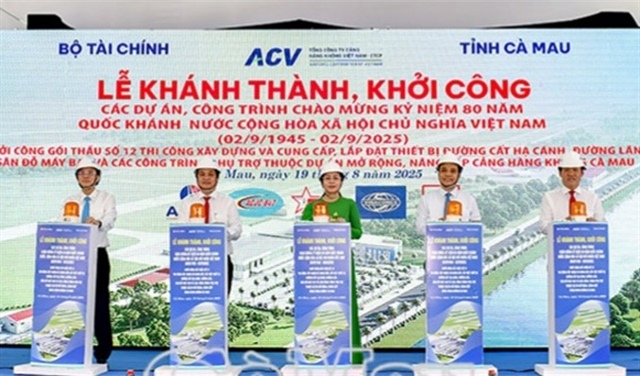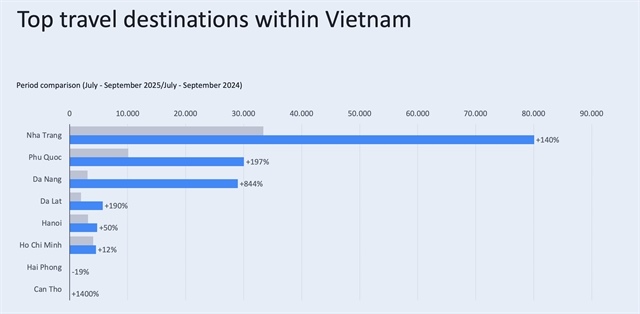Rearranging retail via M&A
Rearranging retail via M&A
Mergers and acquisitions are on the upswing in the crowded Vietnamese retail market, bolstered by local retailers expanding their presence amid fierce competition.
According to market research provider Euromonitor, mergers and acquisitions (M&A) continue to feature prominently in the retail market. In 2017 and 2018, Vietnamese retailing continued to become more consolidated as local players acquired smaller companies to expand their network and increase their share.
During this time, Mobile World JSC completed its acquisition of pharmacy chain Phuc An Khang, and the country’s leading private conglomerate Vingroup took on both electronics and appliance specialist Vien Thong A, and supermarket chain Fivimart. In addition, VinCommerce, the retail arm of Vingroup, recently also made a big splash by acquiring 87 Shop & Go convenience stores for the nominal sum of $1. These activities have quickly cemented the leading status of the key players, while eliminating smaller groups from the competition.
M&A activities are expected to continue at pace. Besides achieving outlet expansion, key players also look at these activities as a quick way to enter a new category.
According to Richard Burrage, managing partner of consumer market research company Cimigo, local retailers have the edge in expanding their reach via M&A. “They are closer to local consumers, far more agile, and less afraid to fail, quickly learning and moving forward,” said Burrage. “This agile iteration enables them to move at a speed that is far superior to foreign retailers.”
He further noted that local groups will continue to dominate the retail market. “Looking at Vingroup’s retail brands, they can use new additions like Fivimart and Shop & Go to drive margin and eventual profitability. Bach Hoa Xanh retail chain, incorporated by Mobile World, accounts for 46 per cent of modern self-service outlets in 2018 with 218 new outlets opened,” he said. “They are yet to be profitable, but I imagine they are learning fast. Saigon Co.op has been testing new formats such as Co.op Smile. These operators will continue to dominate in this space.”
Meanwhile, it will take deep investment and a very long-term view for foreign retailers to succeed in Vietnam’s retail market, according to Burrage. “Companies like AEON, Central Group, and BerliJucker Corporation have already experienced this. However, I doubt they will dominate Vietnam’s retail landscape. They were initially highly restricted in the number and of stores they could operate.”
Over the past few years, Vietnam has also witnessed several deals by foreign retailers such as BerliJucker’s purchase of Metro Cash & Carry Vietnam, and Central Group’s buyouts of Nguyen Kim and Big C.
Truong Thanh Duc, chairman of Vietnamese law firm Basico, attributed the rise of M&A to the fast-paced development of the retail market. “As the of the market is expanding, there will be more entrants. Inevitably, small retailers will be eliminated and M&A is one of the strategies for those small companies to withdraw from the market,” said Duc.
In 2017, around 44 per cent of the total value of M&A activities derived from the consumer goods and retail sector, which indicates an area that remains attractive to investors. Last year, the consumer goods and retail sector continued to lead the 2018 M&A market, according to Baker McKenzie Vietnam.
Data by Euromonitor shows that Vietnam’s supermarket market was valued at VND50.87 trillion ($2.21 billion) in 2018. Meanwhile, the market of convenience stores has nearly doubled in the past few years, from VND1.96 trillion ($85.2 million) in 2015 to VND3.72 trillion ($161.7 million) last year.
This segment is getting crowded, with the US’ Circle K increasing its outlets from 246 to 293 between 2017 and 2018. Japan’s Ministop expanded its footprint from 84 to 112 outlets in the same period.
Meanwhile, Japanese chain FamilyMart ran 126 convenience stores in 2016 and 168 stores in 2017 before dropping eight stores last year. B’s Mart also cut the number of outlets from 159 to 143, while Shop & Go went from 121 stores in 2017 to only 95 in 2018.
When selling its business to Vingroup, a representative of Shop & Go commented that the company had heavily invested in the chain, but business results have not turned out as expected.
“Vietnam’s retail market is promising but competition is stiffer so we decided to pull out of the market,” he said. “It is clear that the competitive landscape is intense, with losses high and risks great.”
Cimigo has maintained for the past four years that convenience stores have been strongly competing against independent grocery stores, but offering no greater convenience.
“Convenience stores will reduce in number and online shopping platforms will play a far stronger role,” said Burrage.
The fusion of offline and online shopping, for instance, is gaining prominence. With a $13.7 billion acquisition of Whole Foods, Amazon has proven that it is always trying to stay ahead of the curve. The tech giant now comes to possess a chain of 450 stores across 42 US states, thus branching out a physical presence and opening itself up to vast blue oceans of opportunities.
Nguyen Huy Hoang, director of market research firm Kantar Worldpanel, said, “The retail landscape is being revamped with the rising omnichannel trend, prompting retailers to improve themselves to satisfy consumers by offering a shopping experience whenever and wherever.”





















